
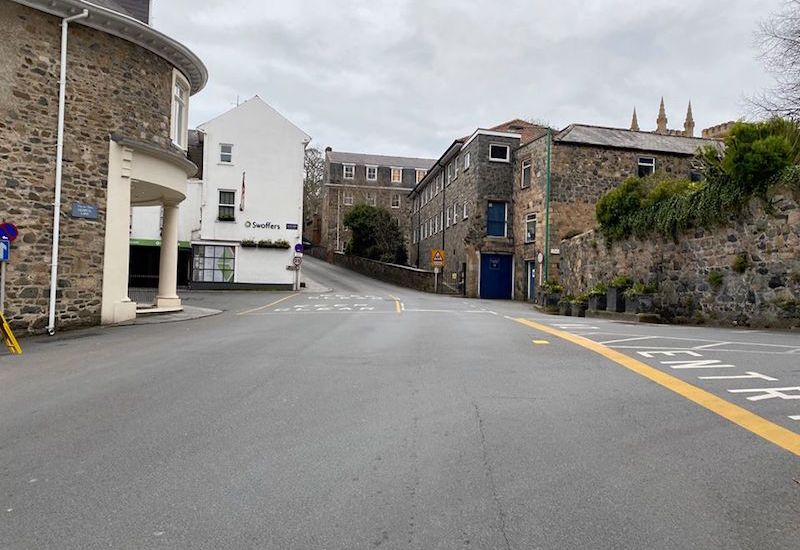

With two weeks passed since the Bailiwick's first lockdown measures were put in place, Express has looked back at how the restrictions have affected the spread of the virus so far, and what Public Health has learnt about covid-19.
In just one month since the first patient in Guernsey was diagnosed with the virus, the Public Health team has tested more than 1,000 people and now has its own facilities at the Princess Elizabeth Hospital to carry out widespread testing on-island.
Changes have been made across the Bailiwick, with Health & Social Care teams quickly adapting to prepare for a surge in demand, local organisations coming up with inventive ways to keep their services running and hundreds of people offering their support to the community, while the majority of us do our bit to save lives and #StayHome.
Although members of the public have stayed apart, these past 14 days have seen the community join together to cheer for the islands' frontline workers, brighten the Bailiwick with rainbows, and quite simply bring a smile by dancing on doorsteps.
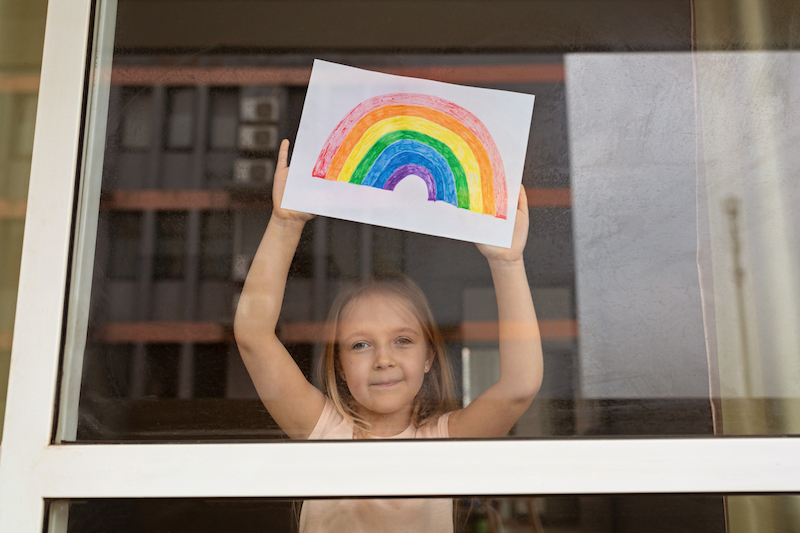
Pictured: Households have been brightening the island with rainbows (file image).
But, with lockdown measures to continue until at least the end of next week - are they working?
Current statistics (data correct 09:00 8 April according to gov.gg)
So far, 166 people in Guernsey have tested positive for corona virus, with no known cases in Alderney, Sark or Herm.
Of those cases, just 13 came from unidentified community transmission while 25% were found through contact tracing, meaning the majority of positive tests are part of a 'cluster'.
The virus has affected people of all ages in the Bailiwick, with the youngest patient being an infant of less than one year old while the oldest is in their nineties.
Although three patients are being treated in the Princess Elizabeth Hospital at the moment, no covid patients have been in need of critical care yet, and 34 have made a full recovery.

Pictured: Three people are currently being treated in the hospital.
'Clusters' of covid-19 patients have been identified in two of the island's care homes, while one person has tested positive in another care home. This has seen the community care sector become the 'frontline' of healthcare work for the time being, while the hospital remains quiet, and experienced carers across Guernsey are being called on for their support.
Sadly, the island has seen five confirmed corona virus related deaths, with two more deaths expected to be linked to the virus.
Community seeding
The rate of unidentified community transmission - or how quickly the virus is spreading through the community without being linked to a known 'cluster' - plays a big part in Public Health and the States' decisions on how the Bailiwick should respond.
When the lockdown measures were first announced, Director of Public Health, Dr Nicola Brink, said she hoped the initial 14 day restrictive period would give her team a better idea of the spreading situation. Now that period is up and, while there is evidence of some community seeding, it does not yet appear to be a major issue, accounting for less than 10% of positive tests.
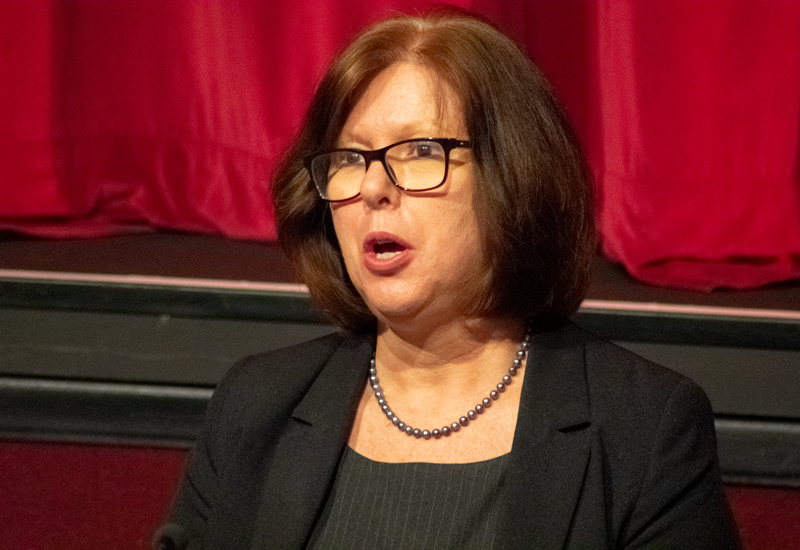
Pictured: Dr Nicola Brink.
"It is apparent that, aside from the clusters in the care homes, things have been going well and we don’t, at the moment, have evidence of widespread community seeding as a consequence of the way islanders have heeded the message to stay at home," said President of Health & Social Care, Deputy Heidi Soulsby.
"We really do understand how difficult this has been for many of you and it’s not something we have had pleasure in doing. But, it does look so far like it really is making a difference. You are all making a difference."
On-island testing
Following hard work from Public Health and other teams within HSC, Guernsey has been able to carry out its own testing for covid-19 for just over a week. In that time, the number of positive cases has jumped significantly from 45 to 166.
That's partly down to faster turnaround times, now that the island is no longer sending samples to be tested in the UK, but it's also a result of Public Health's wider testing strategy. With more freedom to come up with a Bailiwick-based plan, Public Health has seen a rise in the number of tests, with more samples being taken from healthcare workers.
"On-island testing has been a game changer for us in that it’s enabled us to look at the real time management of the pandemic as it affects the Bailiwick," said Dr Brink.
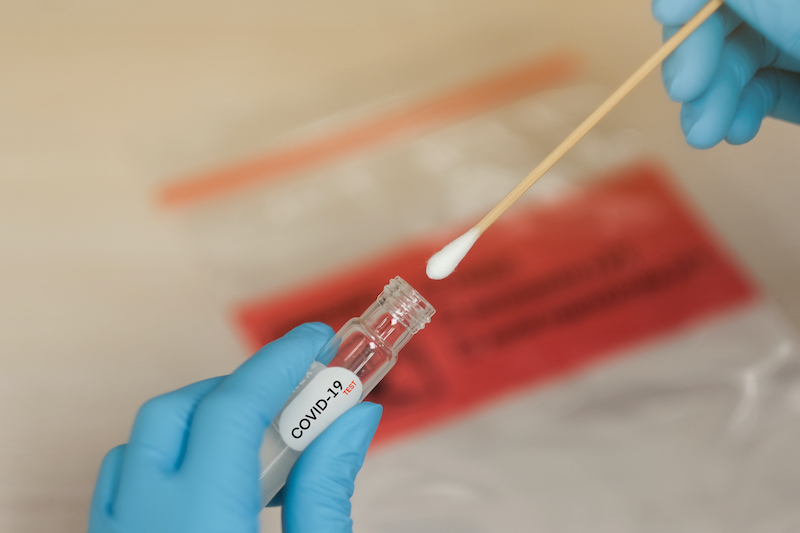
Pictured: Guernsey can now carry out its own testing.
"From our perspective it also helps us, for example we had a potential issue in a small community home over the weekend where they were concerned about a few people. We heard about it on Saturday, we tested on Saturday night, we could say by Sunday morning that this wasn’t anything to do with covid-19. It enables us to manage the situation acutely and quickly.
"The other thing about on-island testing that has been hugely important is it has given us a wealth of data. Not only on the risk factors for infection but, for example, it has enabled us to map what we think is our community seeding. That is pivotal to informing Deputy St Pier and Deputy Soulsby if we want to look at moving towards lifting the lockdown."
However, Guernsey is still having to deal with a worldwide shortage of reagents and swabs, which are both needed to carry out tests. Public Health is working with numerous external partners to keep the vital supply coming in to the island.
Symptoms
While carrying out tests on local patients, Public Health has learnt more about the symptoms of the virus and how they can present in different people.
Although many show the usual indicative signs of corona virus - a dry cough, shortness of breath and a fever - some have tested positive with very minor symptoms, which often include the loss of their sense of smell.
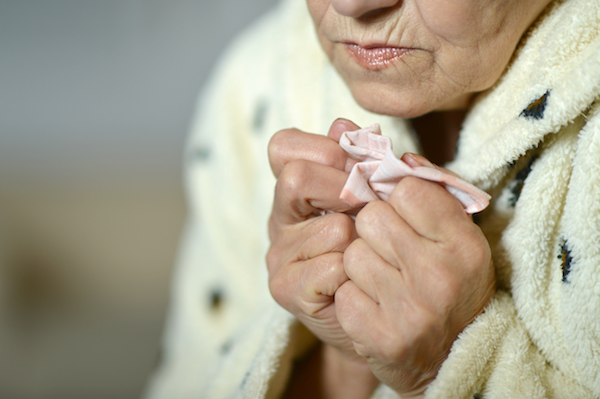
Pictured: Not all positive patients have shown the usual corona virus symptoms.
The team has noticed a particular trend in older patients. who tend not to show the typical symptoms.
"In older people you sometimes see respiratory symptoms but sometimes it’s a bit of diarrhoea, a bit of not feeling themselves or lethargic" explained Dr Brink.
"It’s about having a heightened awareness that this is a new virus that has recently entered our population, and we need to be sure that we know exactly what this virus is doing."
Scientists could even see a change in the virus in the coming months, though this has not been evidenced yet.
"To date, the virus hasn’t show much sequence variation, but it is going to be inherently error prone in its replication," said Dr Brink. "So, from that point of view it is possible that we will see change with time. But, to date, we haven’t seen much change on the sequence data I’ve seen."
Public Health is continuing to adapt its response and advice as new evidence becomes available.
So, what happens now?
Yesterday, the States announced that lockdown would continue until at least 18 April, while Public Health carries on its work to 'flatten the curve'.
In that time, the team hopes to get a better understanding of the community seeding situation before deciding on what is best for our safety and wellbeing.
"The aim of lockdown was to get on top of community spreading, flatten the curve and preserve our hospital assets and look after the health of the population," explained Dr Brink. "If community spreading seems to be static or decreasing, then we can look at how we come out of lockdown.
"It might be that we move out of lockdown and we get a burst of viral replication again and we then move back into lockdown."
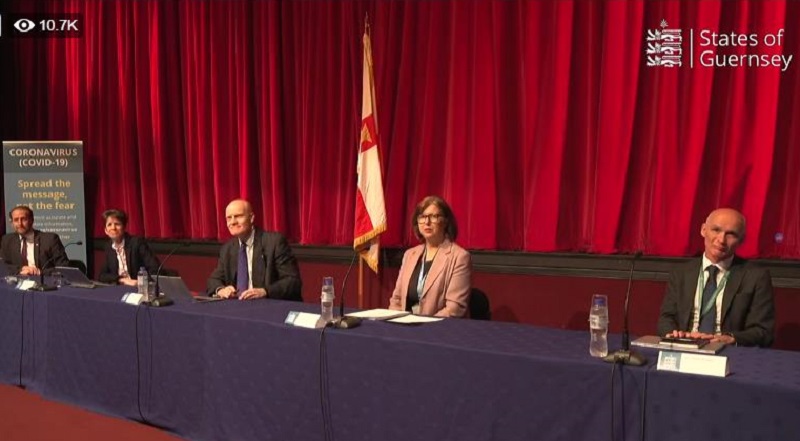
Pictured: A corona virus panel, which addressed the public yesterday.
Talks and research is continuing into antibody testing, which could be the next "game changer" for the Bailiwick - determining whether members of the community have built up an immunity to the virus. But, Dr Brink and her team are yet to find a satisfactorily accurate test.
As President of Policy & Resources, Deputy Gavin St Pier mentioned in his latest statement to the public, the community is far from the end of the crisis, but can hope to soon take "baby steps" back towards normality.
"In short, the strategy is working," he said. "Remembering that the objective was never about preventing all cases, which would be unrealistic, but rather about flattening the curve, ensuring that our healthcare system is not overrun and that we can best treat those who do need treatment. But we cannot be complacent.
"Whilst so far so good, I must level with you once again and tell you that we still have a long way to go to get through this together."
Pictured top: An empty road at rush hour (image from Guernsey Police Facebook page).
Comments
Comments on this story express the views of the commentator only, not Bailiwick Publishing. We are unable to guarantee the accuracy of any of those comments.